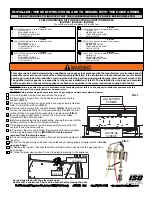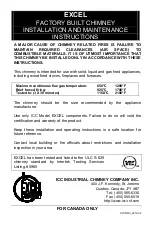
R
OCK
S
HOX
, I
NC
. • M
ARCH
2001
5
R
OCK
S
HOX
, I
NC
. • 2002 S
EAT
P
OST
O
WNER
’
S
M
ANUAL
E
NGLISH
P
E R F O R M A N C E
T
U N I N G
RockShox Seat Posts can be tuned to your particular weight, riding style, and the terrain you ride
on. Using a medium bumper, our Seat Posts are set up for the 150 to 180 lb. (68 to 81 kg), all-
around rider. You may benefit from making tuning adjustments for your specific needs. Install the
post and take your bicycle for a ride before making any tuning adjustments. When tuning
suspension, always make one change at a time and write it down. Keeping a record lets you know
what changes you have tried and suggests what changes you might try.
S e t t i n g S a g
The RockShox Seat Post is designed to compress (sag) when you are sitting on the bike. The
optimum settings for the best all around performance are 0 to 20mm sag for the MTB Post and 0
to 8mm sag for the Road Post. To measure sag, pull the dust boot up from the bottom and install
a zip tie on the inner tube so that it is flush against the retaining ring; sit on the bike in a normal
riding position; then step off your bike and measure the bottom of the zip tie to the top of the
retaining ring. This measurement is the amount of sag.
N
OTE
: B
E SURE TO REMOVE THE ZIP TIE WHEN YOU ARE FINISHED MEASURING SAG
.
Changing the preload alters the sag and firmness of the initial post movement. The preload
adjuster plug in the bottom of the seat post tube adjusts the sag of the post (preload on the spring
stack). When the preload adjuster is turned clockwise, the seat post will sag less and be firmer.
Turning the preload adjuster plug counterclockwise causes the seat post to be softer and sag more.
Do not turn the preload adjuster plug exposing its threads at the bottom of the post tube. Failure
to observe this instruction could result in premature failure of the preload adjuster plug or outer
tube.
C h a n g i n g t h e S p r i n g R a t e
Spring rate changes are made by cutting the bumper. The following are recommended elastomer
lengths for rider weights.
M T B P
O S T
If the sag setting is correct and you cant get a minimum travel of 20 mm, use a softer (longer)
bumper. However, if the sag is correct and you have excessive bottom out, use a firmer (shorter)
bumper. Use the chart below to determine what bumper is best suited for you.
Rider Weight
Bumper Length
Preload Spacers
Turns of Preload
100-160 lb
140mm
0
10-15
140-190 lb
127mm
1
10-25
170-220 lb
114mm
1
10-25
200-250 lb
101mm
1-2
10-30
R o a d P o s t
If the sag setting is correct and you cant get a minimum travel of 10 mm, use a softer (longer)
bumper. However, if the sag is correct and you have excessive bottom out, use a firmer (shorter)
bumper. Use the chart below to determine what bumper is best suited for you.
Rider Weight
Bumper Length
Preload Spacers
Turns of Preload
100-160 lb
76mm
2
5-10
140-190 lb
63mm
2-3
5-15
170-220 lb
57mm
3
5-20
200-250 lb
50mm
3
5-25
Summary of Contents for Seatpost 2002
Page 1: ......




























